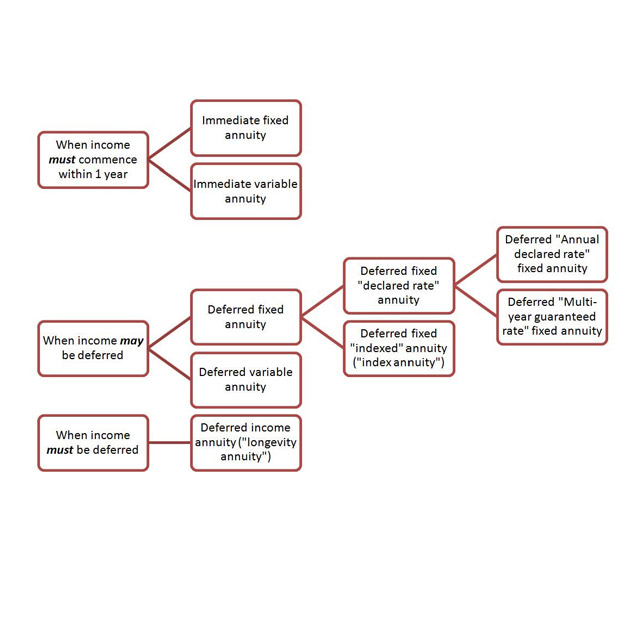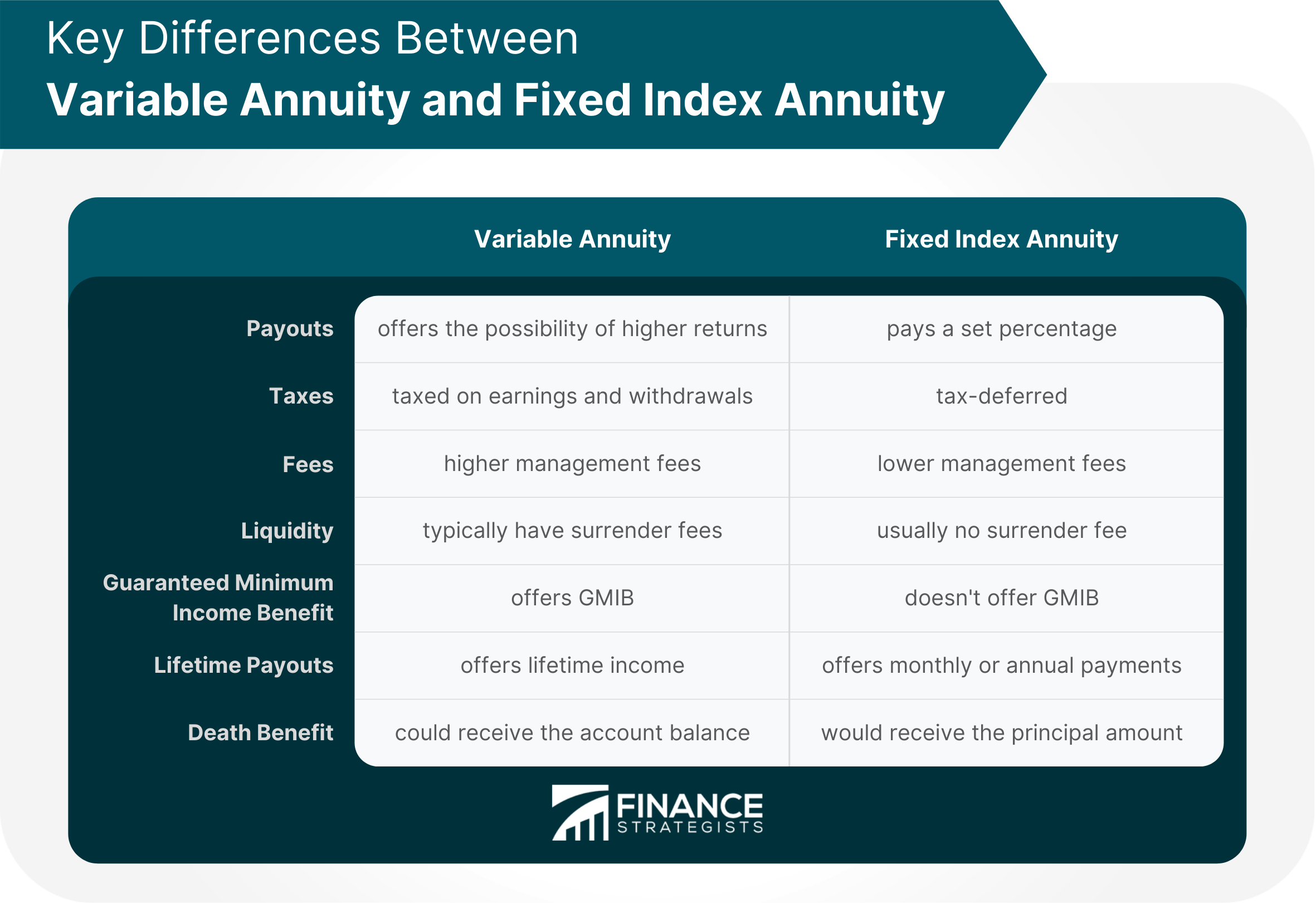All Categories
Featured
Table of Contents
Just as with a fixed annuity, the proprietor of a variable annuity pays an insurance firm a round figure or series of payments in exchange for the assurance of a series of future settlements in return. Yet as stated over, while a repaired annuity expands at a guaranteed, continuous price, a variable annuity expands at a variable rate that depends upon the efficiency of the underlying financial investments, called sub-accounts.

During the accumulation stage, possessions bought variable annuity sub-accounts grow on a tax-deferred basis and are strained just when the agreement proprietor takes out those revenues from the account. After the accumulation phase comes the revenue stage. With time, variable annuity assets must theoretically boost in value until the contract owner decides he or she would such as to start withdrawing cash from the account.
The most substantial concern that variable annuities normally present is high expense. Variable annuities have numerous layers of charges and expenditures that can, in accumulation, produce a drag of as much as 3-4% of the agreement's value each year. Below are the most typical charges connected with variable annuities. This expense compensates the insurance company for the threat that it thinks under the terms of the contract.
Understanding Financial Strategies Key Insights on Retirement Income Fixed Vs Variable Annuity Defining Variable Vs Fixed Annuity Features of Fixed Vs Variable Annuity Why Fixed Annuity Or Variable Annuity Can Impact Your Future Annuities Variable Vs Fixed: A Complete Overview Key Differences Between Variable Annuity Vs Fixed Indexed Annuity Understanding the Key Features of Long-Term Investments Who Should Consider Strategic Financial Planning? Tips for Choosing the Best Investment Strategy FAQs About Planning Your Financial Future Common Mistakes to Avoid When Choosing a Financial Strategy Financial Planning Simplified: Understanding Fixed Interest Annuity Vs Variable Investment Annuity A Beginner’s Guide to Fixed Index Annuity Vs Variable Annuity A Closer Look at Fixed Indexed Annuity Vs Market-variable Annuity
M&E expenditure costs are determined as a percent of the contract value Annuity companies hand down recordkeeping and other management expenses to the contract owner. This can be in the form of a level annual cost or a percent of the contract worth. Management charges may be consisted of as part of the M&E risk charge or may be evaluated independently.
These charges can range from 0.1% for easy funds to 1.5% or even more for proactively managed funds. Annuity contracts can be tailored in a number of means to serve the certain demands of the agreement owner. Some usual variable annuity motorcyclists include assured minimal accumulation benefit (GMAB), assured minimum withdrawal advantage (GMWB), and ensured minimum earnings advantage (GMIB).

Variable annuity contributions supply no such tax reduction. Variable annuities have a tendency to be extremely ineffective lorries for passing riches to the future generation because they do not take pleasure in a cost-basis adjustment when the initial contract proprietor dies. When the owner of a taxable financial investment account dies, the expense bases of the financial investments held in the account are gotten used to reflect the market rates of those investments at the time of the owner's death.
Highlighting the Key Features of Long-Term Investments Key Insights on Your Financial Future What Is What Is A Variable Annuity Vs A Fixed Annuity? Benefits of Choosing the Right Financial Plan Why Fixed Vs Variable Annuity Pros Cons Is Worth Considering How to Compare Different Investment Plans: How It Works Key Differences Between Different Financial Strategies Understanding the Rewards of Fixed Interest Annuity Vs Variable Investment Annuity Who Should Consider Strategic Financial Planning? Tips for Choosing the Best Investment Strategy FAQs About Fixed Annuity Vs Equity-linked Variable Annuity Common Mistakes to Avoid When Choosing Fixed Index Annuity Vs Variable Annuities Financial Planning Simplified: Understanding Your Options A Beginner’s Guide to Fixed Interest Annuity Vs Variable Investment Annuity A Closer Look at How to Build a Retirement Plan
Such is not the situation with variable annuities. Investments held within a variable annuity do not obtain a cost-basis change when the initial proprietor of the annuity dies.
One substantial issue connected to variable annuities is the capacity for conflicts of rate of interest that might exist on the part of annuity salespeople. Unlike a monetary consultant, that has a fiduciary obligation to make financial investment choices that benefit the client, an insurance policy broker has no such fiduciary responsibility. Annuity sales are very lucrative for the insurance policy professionals that offer them as a result of high in advance sales commissions.

Numerous variable annuity contracts have language which places a cap on the portion of gain that can be experienced by particular sub-accounts. These caps avoid the annuity owner from completely getting involved in a portion of gains that can otherwise be enjoyed in years in which markets produce significant returns. From an outsider's perspective, presumably that investors are trading a cap on investment returns for the abovementioned assured floor on financial investment returns.
As noted above, surrender fees can significantly restrict an annuity owner's ability to move properties out of an annuity in the early years of the agreement. Even more, while a lot of variable annuities allow agreement owners to withdraw a specified quantity throughout the accumulation stage, withdrawals yet amount normally lead to a company-imposed charge.
Withdrawals made from a set rate of interest financial investment option can also experience a "market price modification" or MVA. An MVA adjusts the worth of the withdrawal to reflect any kind of changes in rates of interest from the time that the cash was invested in the fixed-rate alternative to the time that it was taken out.

Frequently, even the salesmen that sell them do not fully understand how they function, therefore salesmen occasionally prey on a purchaser's emotions to sell variable annuities instead of the merits and viability of the items themselves. We believe that financiers should completely understand what they own and just how much they are paying to own it.
Decoding Choosing Between Fixed Annuity And Variable Annuity A Closer Look at How Retirement Planning Works What Is the Best Retirement Option? Benefits of Annuities Fixed Vs Variable Why What Is Variable Annuity Vs Fixed Annuity Can Impact Your Future Choosing Between Fixed Annuity And Variable Annuity: Explained in Detail Key Differences Between Fixed Annuity Or Variable Annuity Understanding the Risks of Long-Term Investments Who Should Consider Strategic Financial Planning? Tips for Choosing the Best Investment Strategy FAQs About Fixed Vs Variable Annuity Pros Cons Common Mistakes to Avoid When Choosing a Financial Strategy Financial Planning Simplified: Understanding Fixed Income Annuity Vs Variable Growth Annuity A Beginner’s Guide to Fixed Index Annuity Vs Variable Annuities A Closer Look at How to Build a Retirement Plan
However, the exact same can not be claimed for variable annuity assets kept in fixed-rate financial investments. These possessions legitimately belong to the insurance provider and would consequently go to danger if the firm were to fall short. Similarly, any type of warranties that the insurer has concurred to supply, such as a guaranteed minimum earnings advantage, would remain in question in case of an organization failing.
For that reason, possible buyers of variable annuities must recognize and consider the monetary condition of the releasing insurance firm prior to entering right into an annuity agreement. While the advantages and drawbacks of different kinds of annuities can be debated, the real issue surrounding annuities is that of suitability. In other words, the inquiry is: that should have a variable annuity? This question can be tough to answer, offered the myriad variations offered in the variable annuity universe, however there are some basic guidelines that can help investors make a decision whether annuities should play a function in their economic strategies.
After all, as the claiming goes: "Caveat emptor!" This write-up is prepared by Pekin Hardy Strauss, Inc. Annuity payout options. ("Pekin Hardy," dba Pekin Hardy Strauss Wide Range Administration) for informational purposes just and is not intended as a deal or solicitation for business. The information and information in this write-up does not constitute lawful, tax, accounting, financial investment, or various other expert guidance
Table of Contents
Latest Posts
Understanding Pros And Cons Of Fixed Annuity And Variable Annuity A Closer Look at Fixed Index Annuity Vs Variable Annuity Defining the Right Financial Strategy Advantages and Disadvantages of Differe
Understanding Fixed Index Annuity Vs Variable Annuities A Closer Look at Choosing Between Fixed Annuity And Variable Annuity What Is Annuity Fixed Vs Variable? Features of Fixed Indexed Annuity Vs Mar
Understanding Financial Strategies A Closer Look at How Retirement Planning Works Breaking Down the Basics of Investment Plans Pros and Cons of Various Financial Options Why Choosing the Right Financi
More
Latest Posts